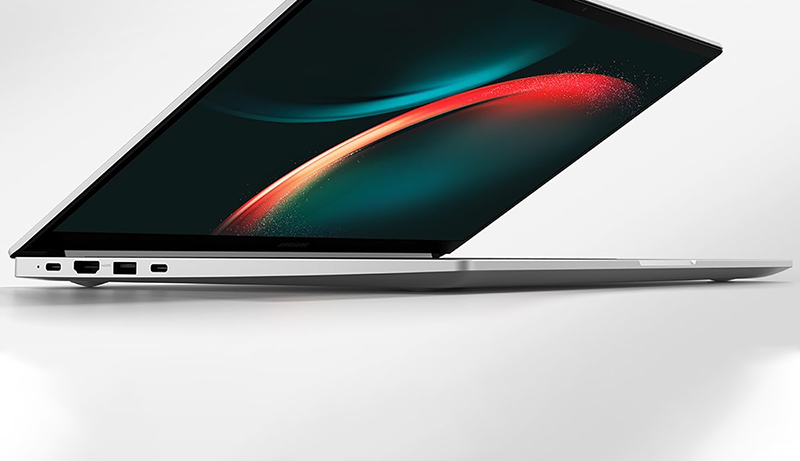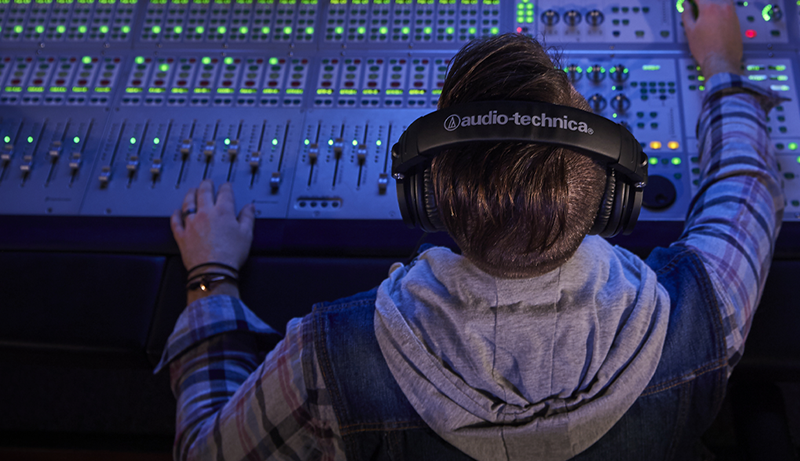Tired of carrying a heavy laptop around in your backpack? I’ve been there too, which is why I started searching for lightweight and portable travel laptops. In this post, I’ll share my experiences with some of the most powerful and fast laptops that won’t weigh you down.
Whether you’re a graphic designer, video editor, photo editor, animator, or any other creative professional who’s always on the go, the laptops I’ve hand-picked here are perfect for your needs. Let’s dive in!
1. SAMSUNG Galaxy Book3

The Samsung Galaxy Book3 has been my go-to lightweight laptop for many design projects. Its exceptional combination of high-end specs and user-friendly design makes it, in my opinion, the best lightweight laptop for creative professionals.
With its 13th Gen Intel Core i7 processor, 16 GB of RAM, and 512GB SSD, the Galaxy Book3 checks all the right boxes. My experience, whether editing high-resolution videos or running multiple design applications simultaneously, was remarkably smooth—a testament to its powerful processor and ample memory.
The 512GB SSD delivered outstanding speed in accessing and saving large project files, significantly reducing the long wait times I’ve encountered with other laptops.
The visual experience, thanks to its 15.6-inch Full HD display and Intel® Iris® Xe Graphics, was vibrant and crisp, making it suitable for a wide range of design tasks. While it may not achieve the top-tier color accuracy some professionals require, it was more than sufficient for most of my work. For more color-critical tasks, you can always connect to an external monitor.
The HD 720p webcam’s clarity and fidelity significantly improved the quality of my online interactions. Coupled with Dolby Atmos speakers and a high-quality microphone, it ensured that my communications were not just heard but felt professional.
The Galaxy Book3 isn’t without its flaws. Initially, I was concerned about its plasticky feel, which made me question its durability. However, this concern proved unfounded as the laptop withstood regular use quite well. Additionally, while the design is sleek, it may not appeal to everyone.
In summary, the Samsung Galaxy Book3 is a highly reliable tool. Its combination of robust processing power, fast storage, and practical features like the high-quality webcam aligns perfectly with the dynamic needs of creative professionals.
2. Apple 2023 MacBook Air

The Apple 2023 MacBook Air with the M2 chip is what many graphic designers, myself included, look for in a laptop: a perfect balance of power, display quality, and portability. Its lightweight design, paired with the M2 chip’s impressive performance, makes it an ideal choice for designers who are frequently on the move.
At the heart of the MacBook Air is the M2 chip, a powerhouse that handles graphic-intensive tasks with ease. Whether working on basic logo designs or complex, multi-layered images in Adobe Photoshop and Illustrator, the laptop’s performance has been consistently smooth, with no hiccups or slowdowns.
The standout feature, though, is the 15.3-inch Liquid Retina display. The color vibrancy and accuracy on this screen are truly remarkable. For color-critical projects, the display’s ability to render true and vivid colors has been invaluable.
Whether it’s fine-tuning subtle color gradients or ensuring print-ready quality, the display never disappointed. Additionally, with 500 nits of brightness, it’s comfortable to work in various lighting conditions—something I often encounter as I switch workspaces.
In terms of portability, the MacBook Air shines. Weighing just 3.3 pounds, it’s been my go-to laptop. The battery life is impressive as well, often lasting through long work sessions without needing a charge, which is a huge advantage when working on the go.
However, it’s not without its flaws. The notch at the top of the display, while minor, took some getting used to. Additionally, the bezels, though not overly thick, could be slimmer to provide a more edge-to-edge display experience, enhancing the device’s aesthetics and immersive feel.
Overall, the Apple 2023 MacBook Air with the M2 chip has proven to be an outstanding laptop for graphic design. Its combination of powerful performance, stunning display quality, and portability perfectly meets the demands of modern graphic design.
3. LG gram SuperSlim

Another lightweight laptop that I thoroughly enjoyed using is the LG gram SuperSlim, which excels with its powerful 13th Gen Intel Core i7 Evo Platform processor, high-speed 6000 MHz LPDDR5 RAM, and ultra-lightweight design. This laptop is particularly impressive for animators who need both strong processing power for rendering and a portable device for dynamic work environments.
The laptop’s core strengths lie in its 13th Gen Intel Core i7 Evo Platform processor and Intel Iris Xe graphics, which together deliver the robust performance necessary for animation software. Whether I’m working on 2D vector-based animations or tackling more complex 3D rendering, the LG gram SuperSlim handles these tasks with impressive ease.
The 15.6” FHD Anti-Glare OLED display is another standout feature, offering a 100% DCI-P3 color gamut. While the screen may not be the sharpest compared to some higher-end models, the vivid colors and deep blacks it produces are more than sufficient for most animation work. The anti-glare coating is a subtle but significant addition, reducing eye strain during long work sessions.
With 16GB LPDDR5 RAM and a 1TB SSD, the laptop provides ample space and speed for storing large animation files and running multiple applications simultaneously. This high-speed memory is particularly beneficial when scrubbing through timelines or loading resource-intensive scenes, where any lag can disrupt the creative process.
Portability is another area where the LG gram SuperSlim truly excels. Its lightweight design, as thin as a AAA battery, makes it easy to carry around, whether I’m working in the studio or presenting to clients on site. The laptop’s military-grade durability also provides peace of mind, especially when traveling or working in diverse environments.
However, the laptop does have a couple of drawbacks. The screen’s resolution, while adequate, doesn’t offer the ultra-sharp detail that some high-end laptops do, which might be a concern for animators working on highly detailed frame-by-frame projects. Additionally, the keyboard’s shallow feel requires some adjustment, especially for those accustomed to a more tactile typing experience.
Overall, the LG gram SuperSlim is a robust and reliable laptop for animation work. Its combination of processing power, excellent display quality, and lightweight form factor make it a strong choice for modern animation workflows.
4. ASUS Vivobook 15

This one is for writers who are always on the move and prefer a laptop over a tablet for their writing tasks. Weighing just 3.75 lb, the ASUS Vivobook 15 OLED offers a perfect blend of functionality and comfort, making it an ideal companion for those long writing sessions.
The 15.6” FHD OLED display has been a game-changer for me, especially during extended periods of writing. With 600 nits of HDR peak brightness and a 100% DCI-P3 color gamut, the display provides a visually comfortable experience that significantly reduces the eye strain I’ve experienced with other screens.
At the core of the Vivobook 15 is an AMD Ryzen 5 7530U Mobile Processor with AMD Radeon Graphics, which effortlessly handles all writing-related software. Whether I’m managing large documents in word processors or conducting research with multiple tabs open, the performance remains smooth and lag-free.
The laptop’s 512GB M.2 NVMe PCIe 3.0 SSD and 8GB DDR4 RAM further enhance the experience, allowing for quick access to files and seamless multitasking.
When it comes to connectivity, the Vivobook 15 OLED doesn’t disappoint. The USB 3.2 Gen 1 Type-C, USB Type-A ports, HDMI 1.4, and Wi-Fi 6E provide all the versatility I need. The multiple ports are especially useful for connecting external devices, like hard drives and secondary monitors, which are essential for my writing setup.
A standout feature is the 180° lay-flat hinge, which makes it easier to collaborate with colleagues or simply adjust the viewing angle for comfort.
However, the design, while functional, lacks the aesthetic appeal I’d prefer. Additionally, the battery life is somewhat limited, lasting less than seven hours on light productivity tasks. This often requires me to plan my writing sessions around the availability of a power source, which can restrict my mobility.
Overall, my experience with the ASUS Vivobook 15 OLED has been largely positive. Its key features, such as a comfortable display, robust performance, and ample connectivity, make it a solid choice for writers.
5. MSI Prestige 13 EVO

I chose the MSI Prestige 13 EVO for its impressive combination of portability, processing power, and display quality. The 13th Gen Intel Core i7 processor immediately caught my attention, efficiently handling the demanding software I use for motion graphics, like Adobe After Effects. It significantly sped up the rendering process, a task that typically takes up a lot of time in motion graphics.
The integrated Intel Iris Xe Graphics smoothly managed real-time previews of my animations, maintaining a seamless playback even in complex sequences. This was crucial for fine-tuning animations and ensuring the visual output matched my vision.
The 13.3″ FHD+ display, with its accurate color representation, was a pleasure to work on. The 100% sRGB color gamut ensured that the colors in my animations were vivid and true to life—an essential factor for creating visually compelling content. The 16:10 aspect ratio provided extra vertical space, making it easier to navigate through layers and timelines.
With 16GB DDR4 RAM and a 512GB NVMe SSD, the laptop offered ample memory and storage. This allowed me to work on large files and switch between applications without any lag.
However, the laptop did have a few drawbacks. The speakers, while adequate for general use, struggled at higher volumes, often producing noise. As a result, I frequently relied on external speakers or headphones, especially when precise audio syncing was required. Additionally, while the SSD was reasonably fast, there were times when I wished for even quicker transfer speeds, leading me to occasionally use an external SSD for larger files.
Overall, the MSI Prestige 13 EVO’s powerful processing, high-quality graphics, and vibrant display, all in a lightweight design, make it an excellent choice for a professional who’s always on the move.
How I Selected the Best Lightweight Laptops
Performance Metrics
I focused on selecting laptops equipped with high-performance processors, such as Intel Core i5/i7 and AMD Ryzen 5/7, ensuring they had a minimum of 8GB of RAM. This was crucial to guarantee that the laptops could run demanding creative software smoothly, without lag or slowdowns.
Weight and Portability
Given the mobility needs of professionals, I specifically chose laptops that weighed under 4 pounds. This criterion was essential to ensure they were easy to transport and convenient to use on the go.
Display Quality
I prioritized laptops with high-resolution displays, aiming for Full HD or higher, with a strong emphasis on color accuracy. Clear, vibrant visuals are vital for creative work, making this a key factor in my selection.
Battery Life
I included only laptops that offer at least 7 hours of battery life, understanding the importance of extended work sessions without the need for frequent recharging.
Storage Capacity
I focused on laptops with a minimum of 256GB SSDs, ensuring fast access to large files and ample storage space for creative projects. This was a non-negotiable requirement.
Build Quality and Design
I selected laptops that not only had durable build quality but also featured aesthetically pleasing designs. Balancing resilience with visual appeal was important in my choices.
Brand Reputation and User Reviews
I thoroughly researched each brand’s market reputation and reviewed user feedback to gauge real-world performance and reliability. This helped ensure that the laptops I chose were well-regarded by actual users.




